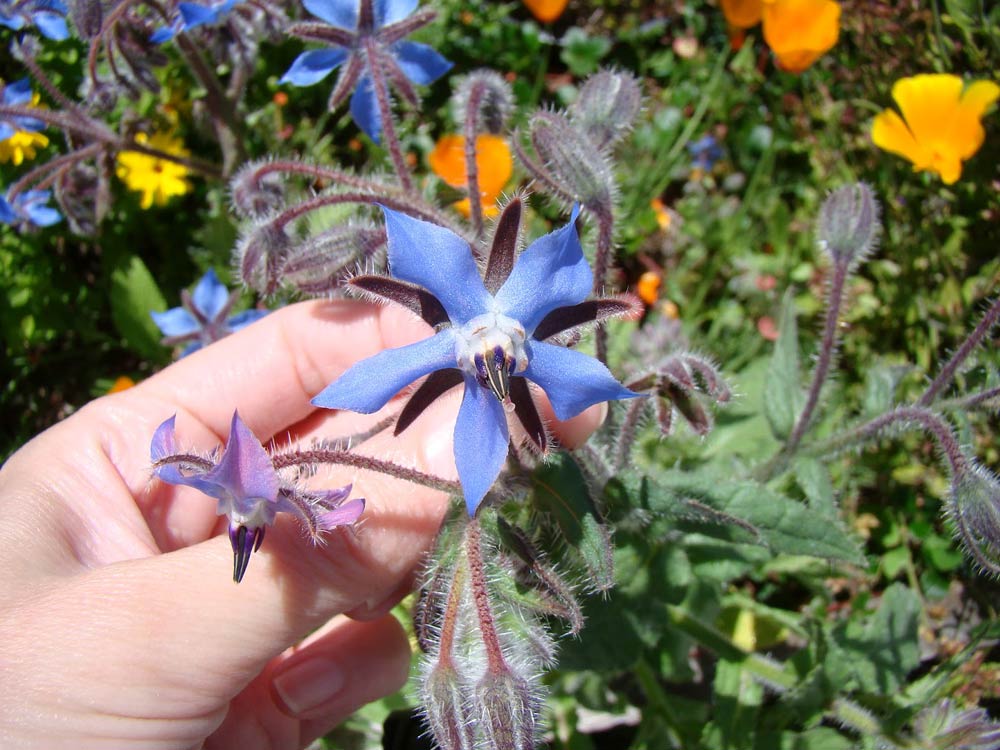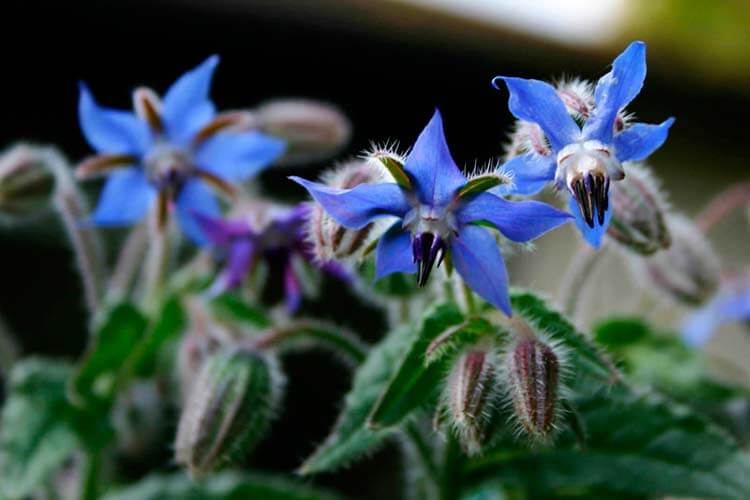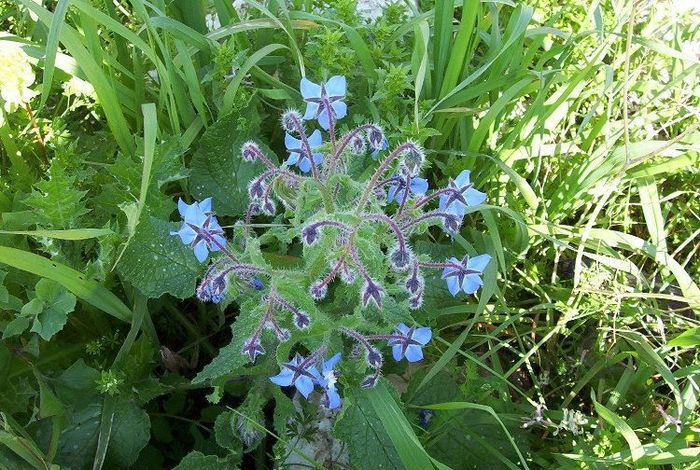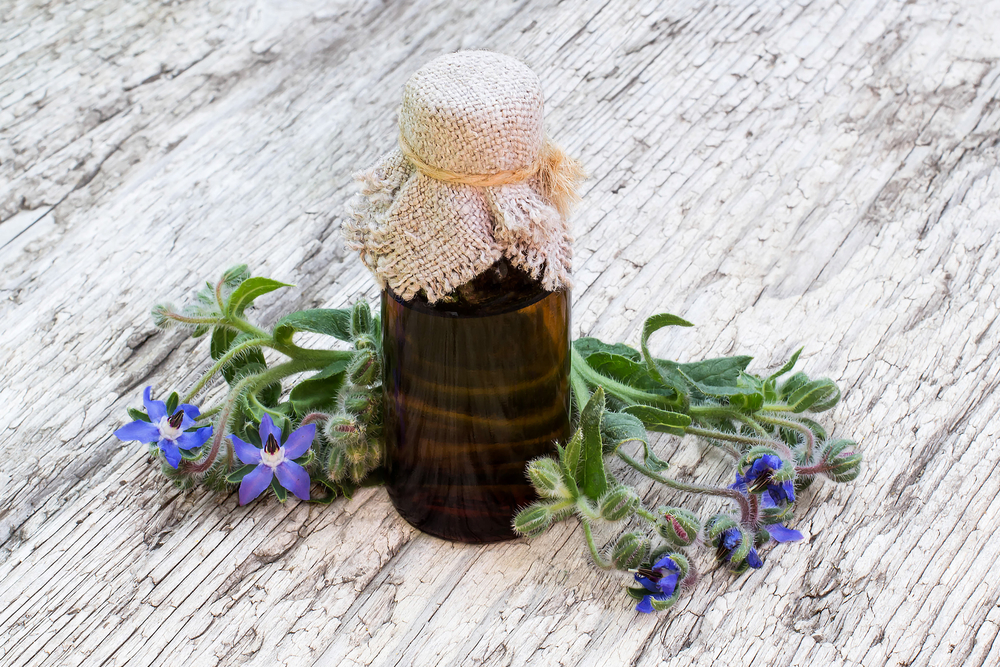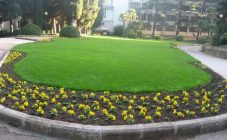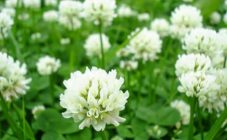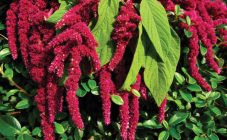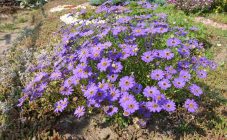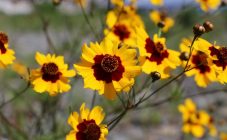Content:
Borago, aka cucumber herb, can be called borage or borage. The annual herb has a characteristic cucumber aroma and flavor. For thousands of years, the plant has not lost its extraordinary properties and is valued no less.
Description of culture
Medicinal borage is native to the Mediterranean. Grown in South-Western Europe as a honey plant. A representative of the Burachnikov family, which is most often mistaken for an ordinary weed.
Borago is a cold-resistant plant. Sometimes it is sown before winter, but it is better - in early spring. Borage grows in gardens, garbage places.
Borago is a strong grass, tall. Differs in dark green leaves covered with white hairs. The leaves are obtuse, the stem is straight. Borago has blue, star-shaped flowers with 5 petals. The color can range from white to deep purple. An annual plant, reaches a height of 0.6–1 m.
The family includes about 115 genera and 2500 species of herbs. Among them are annual and perennial, arboreal and shrub forms. Borage is characterized by hard bristly pubescence.
It differs from other plants of the family in nut-like fruit lobes. Also, the main difference is in the areas of use. Most herbs are decorative, but the cucumber plant is also used for medicinal purposes.
In order not to confuse borage with other plants of the Burachnikov family, you need to know what comfrey and herbs of other varieties look like. Comfrey cannot be confused with borage. It has bell-shaped flowers in lilac tones.
The subfamily veliptediae are characterized by a four-membered flower structure.
Varieties and reproduction
The healing borago is called the "star flower". Borage herb has more than one type of variety, each of which is useful in medicine.
The spice plant gives early vitamin-rich greens. They contain many useful substances. Growing at home is possible subject to certain conditions.
How many varieties, their names, difference and features of growth
There are 5 types of borage cucumber herb. There are more similarities between them than differences.
Borage varieties:
- Vladykinskoye Semko has oval leaves, they are large with strong pubescence. The rosette is spreading, located in the root zone. The variety has large flowers of a closely blue color. The stem is erect, branched, thick, with pubescence. Vladykinskoe Semko is an annual plant. Reaches a height of 30–45 cm. The variety is early maturing. The period from germination to harvesting for greenery is 40–45 days;
- The gnome differs from other varieties in its increased resistance to heat decrease. the bush grows to a maximum of 60 cm in height, the stem is straight. Leaves of the Gnome are dense, oval in shape. The flower is blue with 5 petals. Harvesting starts 45 days after germination;
- The brook is a sprawling grass with strong branching. It grows up to 40 cm in height, a rosette of sessile leaves with a diameter of up to 20 cm. The period from germination to harvest is longer, 45-50 days;
- Okroshka is a salad plant. The bushes grow up to 70 cm high.The variety is rich in tannins and organic acids. The herb bears fruit 50 days after planting. The short growing season allows sowing at several times. Used for conservation or fresh. The leaves of the variety are pubescent, oval, large;
- The April variety has a drooping stem that grows up to 1 meter in height. The flowers are blue with a pink tint. The variety is rich in vitamin C, carotene, essential oils and tannins, calcium, malic and citric acid. The early ripening plant is suitable for growing on windowsills and balconies.
As for the characteristics of growth, you should know - all varieties of borage cucumber herb are resistant to cold weather. Seeds are planted in early winter or early spring, when severe frosts have ended.
Features of plant care: pull out weeds on time, loosening the soil 2-3 times during the growing season, feeding with a solution of chicken manure (1:10) or mullein.
Watering is not too plentiful, but regular.
How the plant reproduces
Reproduction occurs only by seeds. To have borage in the garden all year round, sowing seeds is carried out from early spring to the beginning of winter with an interval of two weeks. How to plant seeds:
- dig up the soil before planting, fertilize with superphosphate and potassium salt in the fall. Dig up again in the spring, add ammonium nitrate;
- planting is carried out at a depth of 1.5–2 cm. The planting pattern is 15 by 25 cm. The seeding rate of seeds is 8–10 g per m2.
The spice also multiplies by self-sowing. If you allow the bushes to seed, you will not have to plant next year. The grass will sprout by itself.
What soil does it grow on
Borage is not picky about the soil. It grows in all conditions with proper care.
Grows best on light, organic soil. In fertile areas, it achieves excellent taste and good chemical composition.
Culture properties
Borage grass not only competes with a real cucumber because of the same scent, it has similar medicinal properties.
The pharmacopoeial plant is included in some dietary supplements.
How is the plant useful?
The herb contains a lot of oil that is good for the skin. The leaves are enriched with vitamins and minerals, among them calcium and potassium are the highest concentration.
Due to its rich composition, the herb is used in various industries. The plant is considered to be soothing, wound healing.
Borage is a great honey plant. It attracts pollinating insects, therefore it is used in beekeeping. Beekeepers plant it in early spring.
The plant has found application in medicine for the treatment of gout, dry cough, fever, as a medicine for constipation. The herb is used in cosmetology, winemaking and cooking.
The spice has a slight scent of fresh cucumber. Add to salads, preserves. Borage can be eaten fresh or candied.
Impact on a person
There are more benefits than harm. The herb has a positive effect on blood quality, strengthens the heart and blood vessels. Borage is used to treat pathologies associated with the nervous system. It is used to strengthen the immune system, improve the functioning of the adrenal glands.
The plant has a diuretic and diaphoretic effect. The use of borage in cosmetics makes the skin elastic, helps to get rid of age-related skin problems.
Borago is useful for people with digestive and metabolic problems. Helps to reduce weight.
Contraindications for use:
- impaired liver function;
- individual intolerance to grass;
- plant oil should not be used for epilepsy and taking anticoagulants;
- pregnancy and lactation.
There is not much harm from the drug, however, prolonged use can lead to liver problems.
There are many recipes for using cucumber herb. They use juice, prepare tea and soup, make salad with horseradish, as well as with cheese and garden cress.
About diseases and pests: what are there and how to deal with them
The plant is resistant to disease. However, with rare watering, aphids appear on the leaves. She sucks the juice. Pest control is carried out using a solution based on pepper, garlic or water and soap. The product is poured into a spray bottle and processed from roots to flowers.
The plant can be damaged by a burdock caterpillar. Cucumber herb is treated with pharmacy valerian. It is mixed with water in equal proportions. A toothpaste-based solution is also used against caterpillars.
Soapy water will save you from most diseases and pests. Having found a problem, they immediately spray the plant.
When can you collect grass and harvest
All raw materials of borage - grass, inflorescences and seeds - are harvested. Cut off during the flowering period at the very root, the stem is cleaned of the lower yellowed leaves.
You can collect it in the fall or at another period when flowering occurs.
How to dry and store
Borage is crushed, laid out on newspapers and left in a place where the sun's rays do not fall. Drying takes 2–3 days.
Do not dry whole leaves, they are too fleshy. The attempt will fail. The leaves will rot.
Store in jars in a dark place. During the drying process, borago loses its unique aroma, the smell remains only on the flowers.
Borago is a storehouse of useful vitamins. It is an excellent source of trace elements that the body needs during the period of adaptation to cold weather. Borage is easy to digest. Recommended for use as a prophylaxis.
Gardeners advise using cucumber herb to protect garden and horticultural plants from pests.
